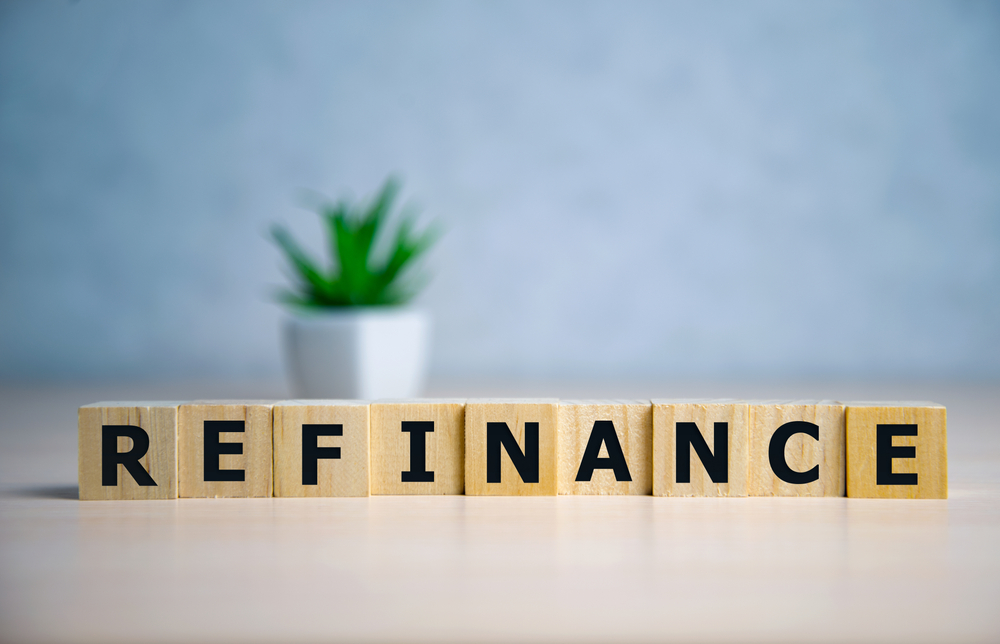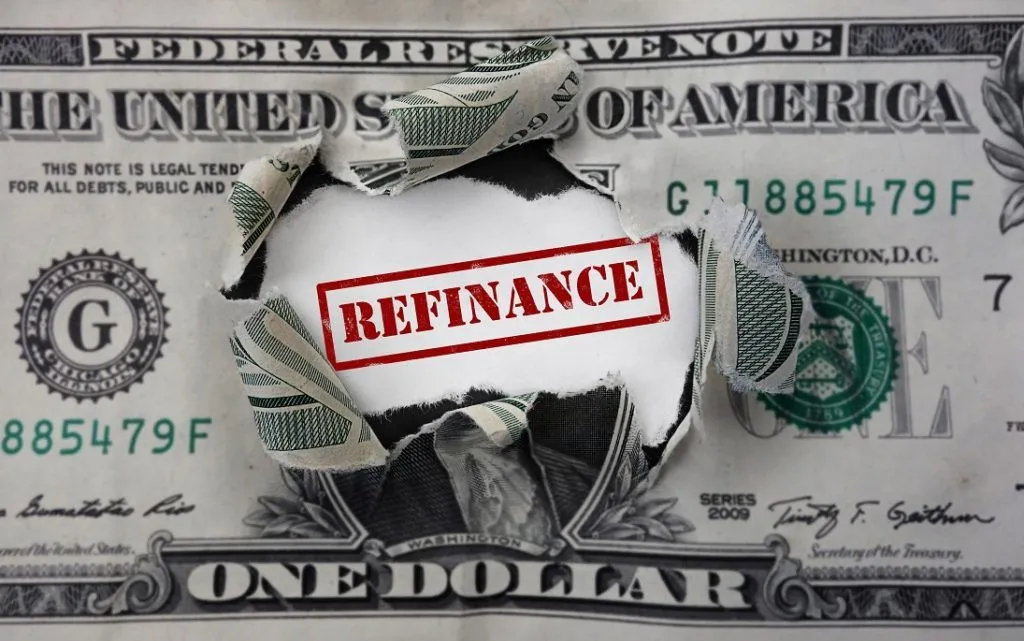Refinancing A-Z : The place you stay in is not just a house, four walls, and a roof, but it is your home, a sense of belonging where you feel safe and can shed all the masks you’ve put on throughout the day.
It is an investment. Refinancing is one way to keep it yours without losing your peace and without added headaches.
Refinance – What Does It Even Mean
Refinance or refi as it is sometimes referred to is revising and modifying/replacing an existing mortgage/loan’s terms and conditions with new ones.
It usually comes into play to lower interest rates, improve terms, such as the loan amount or duration of the loan. It can be any type of loan, from mortgage to car loan to student loan.
Refinancing still needs to be approved by the lenders; you can’t decide yourself and run with it. Refi has different types to select from, each one with its own advantages and disadvantages.
Process of Refinance
Debaters usually get a refinance for certain loan obligations to obtain maximum beneficial mortgage terms, mostly as a result of changing economic or market environment.
The most common reasons for refinancing are:
- To lower one’s fixed interest rate
- To reduce payments throughout the loan
- To change the said duration itself
- To change the mortgage’s term from fixed to a flexible one or vice versa
Second Home Investment: Ultimate Smart Choice or Expensive Hustle?
So, how does it work? What is the process to follow to refinance your mortgage?
In order to refinance, debtor need to reach out to either their current mortgage lender or seek a new one with the request and complete a new home loan application.
Refinancing can’t just happen with a few applications or just because you feel like.
It is going to take a whole process of re-evaluating your credit scores, terms, your finances, and other things that were assessed at the beginning of your actual mortgage.

Types of Refinancing
There are several types of refinancing your mortgage. The type of refinancing a debtor decides to get depends on their needs and the criteria. Some of the most common refinancing options include:
Rate-and-Term Refinance
Rate-and-term Refinance is one of the simplest types of mortgage refinancing. It allows the debtor to refinance their mortgage with a new loan agreement that has a lower interest rate or a different loan term duration, or maybe both.
The main purpose of a rate-and-term refinance is to save money, whether on interest or by shortening the loan duration or both, if it fits the terms and conditions.
Cash-Out Refinance
Cash-out refinancing is a type that allows the borrower to switch the old loan to a new agreement with a new loan usually for a bigger amount than the previous one.
It gives you the chance to withdraw the difference in cash, which can be used for a n-number of purposes.
Cash-In Refinance
Cash-in refinance is all about making a single payment when you refinance your mortgage to a new one. This helps to lower the value of your home loan.
Streamline Refinance
Streamline refinancing is a type of mortgage refinancing that reuses the original home loan’s paperwork, allowing quicker modification of the loan.
It is an efficient way to get a lower interest rate on an FHA, VA, or USDA mortgage because of little to zero paperwork and no need for a credit check or appraisal from the lenders.
FHA and VA Streamline Refinance
FHA and VA are subcategories of streamline refinance that are available to debtors by FHA (Federal Housing Administration) or by VA loans, respectively.
USDA Streamline Refinance
Like FHA and VA, USDA also provides a streamline refinance to its borrowers.
No-Closing Refinance
This type of refinancing permits the debtors to avoid paying upfront closing costs on closing day instead, you can add them to the new loan. These closing costs can be appraisal fees, title insurance, and such.
Short Refinance
Short refinancing lets the borrower and lender get into an agreement where the lender agrees to refinance the debtor’s home for the current market value to avoid foreclosure.
And the lender replaces the previous loan with a new one and releases the debtor from the original mortgage.
Reverse Mortgage
A reverse mortgage is not a traditional refinance; it is something new, especially designed for senior citizens (62 or 62 plus). It allows them to get a home loan against the equity in their home without monthly payments.

A-Z of Refinancing You Need to Know
Now that we know what refinancing is, how it works, types of refinancing, let’s talk about the A-Z of it that is gonna play a big role in your decision making.
Assess in Refinancing
The most important step before applying to refinance is doing a thorough assessment of whether refinancing is in fact something you need and is beneficial to you.
You can do this by going through your current interest rate, loan terms and conditions, duration, and your financial situation.
Apply in Refinancing
After making sure refinancing is the right step for you, you submit your refinance application to a mortgage lender, maybe your old one or a new one. This application should include all the required and necessary documents and information asked for.
Appraise in Refinancing
A mortgage lender usually requires an appraisal of your home to ensure it covers the actual loan amount.
Closing in Refinancing
The final step is where you need to sign your new mortgage documents; your existing loan, as decided by the lender, is paid off, and the mortgage starts.
Debt Consolidation
Refinancing can consolidate multiple debts into a single mortgage, simplifying your finances.
Eligibility for Refinancing
The most important part for refinancing is meeting the mortgage provider’s eligibility criteria, which may include credit score, debt-to-income ratio, etc.
Fees
Refinancing may or may not include fees; make sure you have read about that as well.
Interest Rate
The primary factor to consider while refinancing is to have a lower interest rate, and hence spend less on your monthly installments. Saving money in the long term should be the goal.
Loan Amount
Also, check for the total amount you took as a loan. It might or might not change during the refinance process.
Loan Duration
Loan duration is prone to change during the refinancing; it might shorten depending on the type you opt for or other factors, or it can be lengthened.
Market Condition
Market conditions are also a vital deciding factor in whether refinancing can be beneficial or not.
Risk in Refinancing
There is also a risk in refinancing that the borrower may not be able to get good, favourable refinancing terms in the future.
Type to Pick
There are numerous types of refinancing schemes, choosing which can be most beneficial to you is important. Don’t jump and opt for one which seems good, do your research or seek professional help.
Underwriting
The process where lenders evaluate your application and determine if you actually qualify for the loan is underwriting.
Value
Evaluating the value of refinancing is based on potential savings, costs involved, and what you can save for the future.
Wrapping Up
In this article, our main focus was giving you a clear idea about refinancing, not just what it is, the types, how it can be beneficial for you, and the A-Z of it, so you can follow the steps and make sure you’re doing it right.
In case we miss any point or you have any suggestions, let us know by dropping a comment.
FAQs
Is refinancing and remortgaging the same?
Yes, they are in fact the same things. Refinancing is the term used in the USA, and remortgaging is a more common term in the UK. The simplified meaning for both is replacing an existing mortgage with a new one.
Will refinancing my mortgage cost me a lot?
Refinancing your mortgage in the States usually costs you in the range of 2-6% of your new loan amount. These closing costs will contain the fees for origination, home appraisal, and such.
Is refinancing my mortgage even worth it?
As per decades of research, refinancing is a good choice if your interest rate is lowered by at least 2%. And in many cases, mortgage lenders believe even 1% savings is a good enough reason to refinance.




